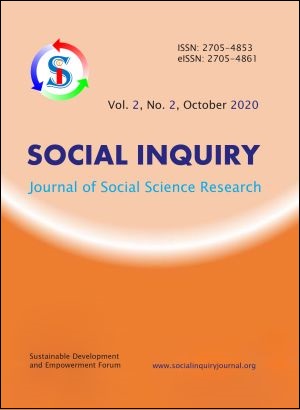Strained Identity: Cultural and Religious Rituals of a Musahar Community
DOI:
https://doi.org/10.3126/sijssr.v2i1.28912Keywords:
Musahar, Dalit, Minority, Cultural practice, IdentityAbstract
This article portrays the Musahars, untouchable by tradition, as observing their cultural and religious rituals despite strains of change surrounding their identity. One of the diverse ethnic minorities of the Tarai plains of Nepal, the community exhibits a distinct set of characteristics, meriting ethnographic attention. Past studies have looked into their socio-economic situation but their cultural and religious practices, markers of their identity, are less studied. In that context, this paper has done the desk and field reviews of the cultural and religious traits seen in a small Musahar cluster of Province 1. The objectives were to describe the community’s everyday practices, what its members eat and drink, how they observe their life-cycle rituals, their feast and festivals, dresses and ornaments in light of literature, field observation and intensive interviews. The primary and secondary data are used to describe the everyday practices and strains of change in the Musahar identity. Interviews were held with four participants sampled purposively from Ward 1 of Biratnagar Metropolis, in Morang. The findings of this paper are expected to be useful for researchers interested in this particular community as well as for planners and policymakers who seek to bring the downtrodden community into the mainstream of development.




